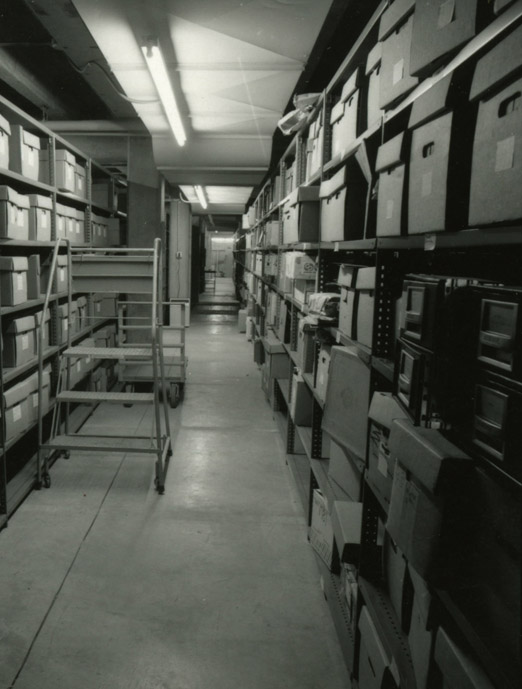(In celebration of the University Archives’ upcoming 50th Anniversary in 2015, we bring you “The Twelve Days of Buckeyes”. This is day six in a series of 12 blog posts highlighting the people who were instrumental in the creation and growth of the Archives.)
Until 1978, the Archives did not have a department or unit on campus to call its own. When Bruce Harding, the first professional archivist, was hired in 1965, he reported to the Secretary of the Board of Trustees, then to the Vice President of Educational Services.
In 1978, though, the Archives was reassigned to the Libraries, which was then led by William Studer, director from 1977 to 1999. It made sense: Both entities held a mission of acquiring, preserving and making available information. That year, the Archives joined the Special Collections section of the Libraries.
It turns out that Studer had been a long-time fan of special collections like the Archives, understanding the importance they have in any academic library setting. In a 2011 oral history interview, he said “Special collections, in my view, significantly define a research library and its mission to support research and scholarship.”
(The University Archives is not the only collection added to the Libraries under Studer’s leadership; the Billy Ireland Cartoon Library and Museum was founded in 1977, and the Byrd Polar Research Center Archival Program became part of the Libraries’ special collections in 1985.)
As part of the Libraries, the Archives could be protected in times of fiscal leanness, but it would also benefit from more robust budgets, such as in 1980 when the Libraries doubled the Archives’ operating budget and added an assistant archivist.
A key turning point was when the Archives moved in 1995 to the Book Depository on Kenny Road. The Archives had been housed in makeshift facilities, located most recently in Converse Hall, where the ROTC program is housed. (One of the Archives’ reference rooms sat next to a shooting range, not exactly a winning combination.)
Under Studer’s leadership, the plans were adjusted for the building so that reference rooms and office space could be added for the Archives, while its collections shared warehouse space in back of the building with the Book Depository materials.
“I was obviously committed to the University Archives and wanted to make something of it, without realizing fully what it could and would become, wanted to make it something much more than it was. And part of this involved adequate housing,” he said in the oral history interview.







Recent Comments